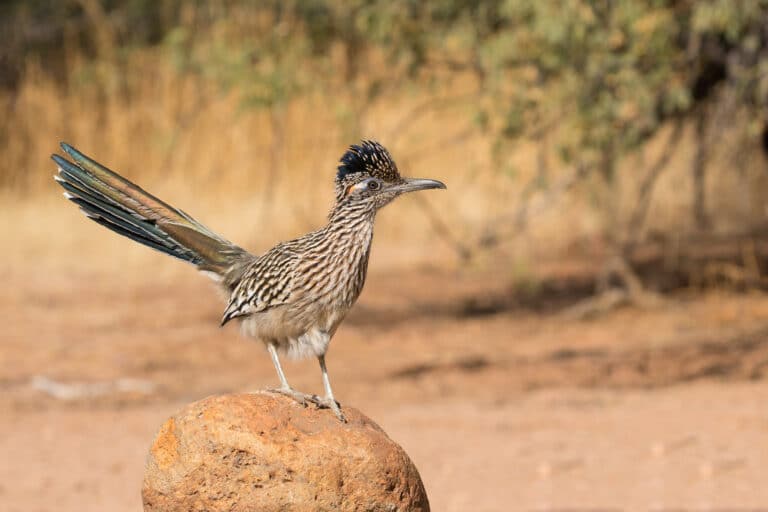The Violet-crowned Hummingbird is the signature species of Tucson Audubon’s Paton Center for Hummingbirds in Patagonia. More people have first laid eyes on this species at this location than anywhere else on the planet. Its range is primarily in Mexico, extending from Oaxaca northward along the Pacific slope, just entering the US in several middle-elevation riparian woodland stretches in Southeast Arizona and southwest New Mexico. Within Arizona, it is most numerous in Guadalupe Canyon in the state’s extreme southeastern corner, but for more accessible viewing it is best sought out in the shady woodlands along Sonoita Creek, where the Paton Center is situated.
The Violet-crowned Hummingbird is a regular low-density breeder in the state, with the majority of nesting occurring during the late summer monsoon season. Historically, Arizona’s Violet-crowneds were summer residents only, but in recent decades small numbers have been over-wintering. This past winter, one individual delighted many birders and photographers at the Paton Center as it stood guard in an elderberry tree for hours at a time, always at the ready to give chase to any Anna’s or Broad-billed Hummingbird that attempted to reach one of the nearby feeders it claimed for its own exclusive use.
Field guide illustrations cannot fully capture the magical essence of this species. Pictured on a color plate with other hummingbirds, the Violet-crowned doesn’t stand out the way that it does in life. It has no dazzlingly colored or outlandishly-shaped throat patch. Its back is a duller brownish green rather than the bright jade shown by many species. Illustrated against a background of glossy white paper, its white underparts don’t catch the eye, but rather make it fade into the page. Only the depiction of the red bill and violet crown offer a hint that this is a bird to be appreciated as more than just another species to add to one’s list.
Photographs do a better job of bringing this species to life, but even the best photos cannot fully re-create the experience of seeing a Violet-crowned Hummingbird turn its head to just that precise angle that transforms its crown into a retina-piercing laser beam of violet that takes your breath away. If seen at a perch while facing you, the bright snowy white of the bird’s entire underside set against the leafy green habitat is often the feature that alerts you to its presence. If it’s facing away, the brownish green back will camouflage it, at least until it inevitably turns its head, revealing the diagnostic combination of bright red bill and gleaming white throat. If seen in close proximity to a Broad-billed, Black-chinned or Anna’s, its somewhat larger size will often be apparent.
Unlike most other North American hummingbirds, the sexes of the Violet-crowned are practically identical in appearance. Even immature birds, slightly duller in plumage and with less extensively red bills, have enough of the distinctive features of the adults to make them readily identifiable.
Of the 247 species that have been recorded at the Paton Center, it is the Violet-crowned Hummingbird with which it will always be most associated. This is, after all, the main species that birders kept stopping along the road to view decades ago, which led to the incredible act of kindness on the part of Walter and Marion Paton in opening their yard to the birding public. It’s safe to say, without the Violet-crowned Hummingbird, there would be no Paton Center for Hummingbirds.
Image by Greg Lavaty




